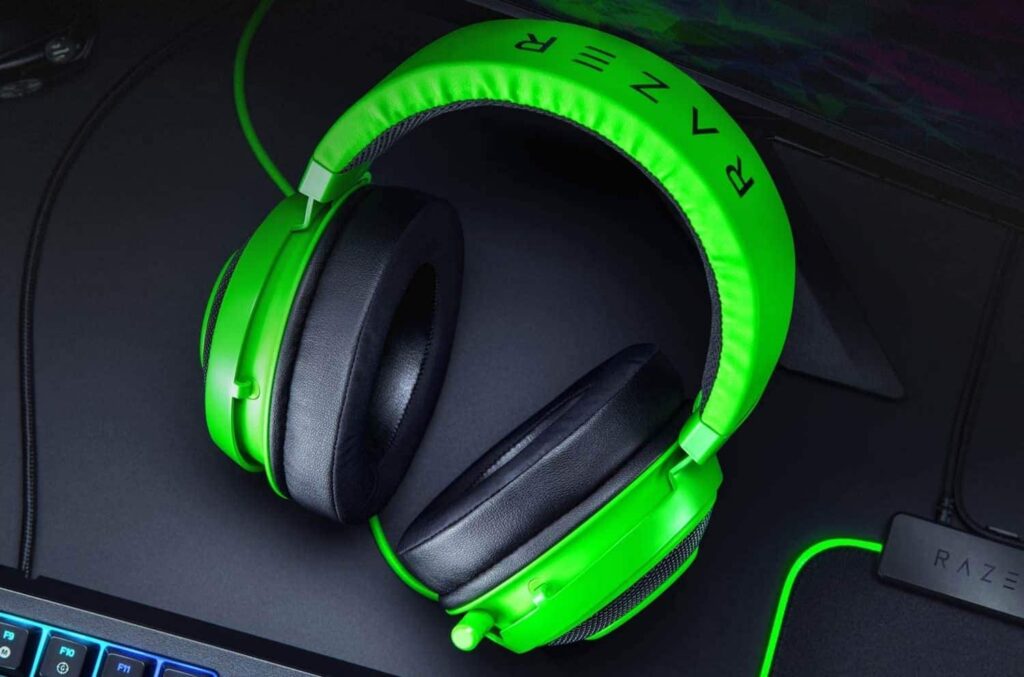Welcome to the realm of immersive gaming, where every millisecond counts. If you’ve found yourself caught in the frustrating web of delays with your USB gaming headset, fear not – you’re not alone. The thrill of gaming can quickly be dampened when audio lags behind the action, impacting your performance and overall experience. In this guide, we’ll delve into the intricacies of fixing delays with USB gaming headsets, providing you with actionable insights and step-by-step solutions. Get ready to reclaim precision, responsiveness, and uninterrupted gaming bliss as we unravel the secrets to eliminate those pesky delays. Let’s embark on a journey to optimize your gaming setup and ensure that your USB gaming headset keeps pace with the fast-paced virtual worlds you love to explore.
How to fix delay with usb gaming headset
Bringing Your Gaming Experience Back to Sync Dive into Driver Updates Your gaming headset, like any tech companion, needs the right instructions to perform at its best. Begin by updating its drivers:
- Identify Your Headset Model:Locate the make and model of your USB gaming headset.
- Visit the Manufacturer’s Website:Head over to the official website of the headset’s manufacturer. Look for the “Support” or “Downloads” section.
- Download the Latest Drivers: Find the drivers specific to your headset model and download the latest version. Ensure you’re grabbing the right one for your operating system.
- Installation Process
- Follow the installation instructions provided with the downloaded drivers. Reboot your system if prompted.
Best budget gaming monitor for ps4 this year!
Tackling Firmware Updates
Just like software, the internal workings of your gaming headset can benefit from a firmware update:
- Check for Firmware Updates: Explore the manufacturer’s website once again. This time, look for firmware updates related to your headset.
- Read Release Notes: Take a moment to read the release notes accompanying the firmware update. This might provide insights into bug fixes and improvements.
- Follow Installation Instructions:Download and install the firmware update following the provided instructions. Remember to disconnect and reconnect your headset as directed.
See price for SteelSeries gaming headset https://amzn.to/4aUEi9b
Fine-Tune Audio Settings
Sometimes, the solution lies in the less explored corners of your operating system:
- Navigate to Sound Settings: In your computer’s settings, locate the sound or audio settings.
- This can often be found in the control panel or system preferences.
- Adjust Latency Settings: Look for settings related to audio latency. Adjust these settings to minimize delays.
- Be cautious not to set them too low, as this might cause audio glitches.
- Test and Tweak: Play a game or use an audio test to assess the impact of your adjustments. Tweak the settings gradually until you find the sweet spot.
- By diligently following these software-centric steps, you’re paving the way for a smoother, more responsive gaming experience.
Step-by-step how to fix delay with usb gaming headset

Know Your Headset
Before setting sail, familiarize yourself with your gaming headset. Locate the make and model, often found on the device itself or in the user manual. This knowledge is your compass as you navigate the driver update landscape.
Navigate to the Manufacturer’s Website
Open your preferred web browser and visit the official website of the headset manufacturer.
Seek out the “Support” or “Downloads” section. This is where the treasures (read: drivers) are usually hidden.
Find Your Drivers
In the downloads section, locate the drivers corresponding to your headset model. Ensure you’re choosing the version compatible with your operating system.
Download the latest drivers—your key to unlocking enhanced performance.
See price for SteelSeries gaming headset https://amzn.to/3RZbC6m
Install with Precision
Once the drivers are downloaded, locate the installation file. This is often a straightforward executable file (.exe) on Windows or a package file (.pkg) on Mac.
Double-click to launch the installer and follow the on-screen instructions diligently.
Reboot Your System
After installation, the system may prompt you to restart. Don’t hesitate—save your work and reboot. This ensures the changes take effect seamlessly.
Verify Success
Post-reboot, reconnect your gaming headset and open your device settings.
Confirm that the driver update was successful by checking the device information. Look for updated version numbers or any indicators of the recent update.
Test the Waters
Dive into your favorite game or play a snippet of music to test the audio performance.
Pay attention to any improvements in responsiveness and audio quality, savoring the fruits of your driver update labor.
And there you have it—a journey completed, bringing your gaming headset to the forefront of performance. Your headset now marches to the beat of the latest driver, ensuring a harmonious connection between you and your virtual realm. May your gaming adventures be as smooth as your driver update process.
Understanding USB Gaming Headset Delay
In the world of gaming, where split-second decisions can mean victory or defeat, the delay in your USB gaming headset can feel like an unwelcome glitch in the matrix. But fear not, fellow gamer, let’s embark on a journey to understand the roots of this delay and equip ourselves with the knowledge to overcome it.
Step 1: Acknowledge the Challenge
Identify the Symptoms: Before diving into solutions, recognize the signs of delay. Are you experiencing audio lag, a mismatch between visuals and sounds, or intermittent disruptions?
Realize the Impact: Reflect on how this delay affects your gaming experience. Does it hinder your reaction time or compromise the immersive quality of the game?
Best Budget Gaming Monitor for Xbox Series S
Step 2: Unveiling the Causes
Technical Limitations: Understand that certain technical aspects contribute to delay. USB connections, while convenient, may have inherent latency.
Interference Issues: Consider external factors like interference from other devices. Wireless signals and crowded USB ports can sometimes disrupt the seamless flow of data.
Best budget gaming monitor for laptop
Step 3: Diagnostic Exploration
Latency Testing Tools: Explore available latency testing tools. These can help pinpoint the specific delays your USB gaming headset might be facing.
Hardware/Software Conflicts: Investigate potential conflicts between your headset and other hardware or software. Check for recent installations or updates that might be causing issues.
Step 4: Impact Assessment
Gaming Performance:Evaluate how the delay is impacting your gaming performance. Are you missing critical cues or experiencing a disconnect between your actions and the game’s response?
User Experience: Consider the overall user experience. Is the delay a minor annoyance, or is it significantly detracting from the enjoyment of your gaming sessions?
Understanding USB gaming headset delay is the first crucial step towards a solution.
By acknowledging the challenge, unveiling its causes, and conducting a diagnostic exploration, you’re arming yourself with the insights needed to address this issue head-on. The gaming realm awaits your triumphant return to lag-free adventures.
Advanced Tips for Reduced USB Gaming Headset Delay
Congratulations on navigating the initial steps to understand and address USB gaming headset delay, Now, let’s delve into advanced strategies to fine-tune your setup for a truly seamless gaming:
- Dive into Audio Settings: Journey into your operating system’s audio settings. Look for advanced options related to USB audio devices.
- Adjust Buffer Size: Experiment with adjusting the buffer size. A smaller buffer can reduce latency, but be cautious not to set it too low, as this may lead to audio glitches.
Configure Gaming Software
Optimize In-Game Audio Settings:Enter the settings menu of your favorite games. Some titles offer specific audio settings that can be fine-tuned for lower latency.
Prioritize Performance Over Graphics:In graphics-heavy games, sacrificing a bit of visual flair for enhanced performance can contribute to reducing overall system latency.
Investigate External Interference
- Minimize USB Interference: If possible, dedicate a USB port solely to your gaming headset. Avoid connecting other high-bandwidth devices to the same port.
- Address Wireless Signal Interference:If using wireless peripherals, consider adjusting their frequencies to minimize interference.
- This can have a positive ripple effect on your overall setup.
Experiment and Test
- Trial and Error: Embrace a spirit of experimentation. Adjust one setting at a time and play a bit to assess the impact.
- This iterative approach allows you to find the optimal configuration for your unique setup.
- Seek Community Insights:
- Join online gaming communities or forums. Fellow gamers often share valuable insights and tips on minimizing USB gaming headset delay based on their experiences.
Stay Informed
- Keep an Eye on Updates:Regularly check for firmware updates for your gaming headset and any associated software.
- Manufacturers often release updates to address performance issues.
- Stay Current with Gaming Tech Trends: The gaming landscape is ever-evolving.
- Stay informed about new technologies or solutions that may emerge to further enhance your gaming setup.
- By incorporating these advanced tips, you’re not just reducing USB gaming headset delay—you’re elevating your gaming experience to new heights. Remember, each adjustment brings you closer to that perfectly synchronized audio-visual harmony.
- May your gaming sessions be lag-free and your victories aplenty.
See price for Razer gaming mouse https://amzn.to/3Sgrv9R
Conclusion
In the dynamic realm of gaming, where precision and responsiveness are the keys to victory, conquering the challenge of USB gaming headset delay marks a significant achievement. As we conclude this guide, let’s reflect on the journey we’ve undertaken together and celebrate the strides you’ve made towards a lag-free gaming experience.

